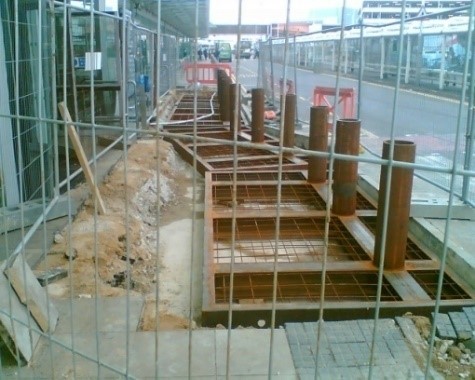Airport Forecourt Security
Following the 9/11 World Trade Centre attacks, the physical security of airport infrastructures have been enhanced from all perspectives.
One particular concern held by airport operators is the potential for Vehicle-Borne Improvised Explosive Devices (VBIEDs) to exploit physical weaknesses at terminal forecourts, allowing hostile, explosive-laden vehicles to enter airport terminals.
With a number of existing terminal buildings only nominally protected, this was a real concern, and a relatively rapid deployment of Hostile Vehicle Measures (HVM) was required to ensure that attackers could not enter terminal buildings.
MMI, working through their client, provided hostile vehicle security services to BAA at its Heathrow, Gatwick, and Stansted Terminals between 2006-2007.
MMI undertook technical calculations to develop physical barriers that would be capable of resisting the hostile vehicle threats, while being buildable and not excessively disruptive to operations.
MMI also liaised with the Centre for the Protection of National Infrastructure (CPNI), which was highly active in carrying out physical tests and preparing Publically Available Specifications (PAS 68 and 69) to ensure that the resources to counter these threats were available.
Design Challenges
Recognising the highly unpredictable way in which such attacks might occur, a threat assessment procedure was developed to consider a large number of scenarios.
A range of barrier types were considered, including walls, bollards, planters and fences. All barriers needed to be buildable and not disruptive to forecourt operations, including the movement of passengers, trolley stations and taxi ranks, for example.
One notable design challenge was to deal with shallow foundation depths due to either buried services or elevated forecourts. It was necessary to understand how the vehicle would interact with the barrier, so that sliding and overturning failure modes were avoided and adequate strength was provided. Early solutions included welded steel subframes, which could be cast into ground slabs of about 250mm depth. However, these were later replaced by a plethora of tested products.
Early Bollard System with Integral Sub-Frame, Designed to Deal with Shallow Foundation Depths
Results
MMI worked proactively with their client to rapidly design a range of HVM that would deal with site-specific impact threats in a cost-effective manner, while significantly reducing the risk of harm to the public.
For more information surrounding our HVM capabilities and work within the Security Sector, please contact us on 01925 230 655 (Warrington) or email us.
